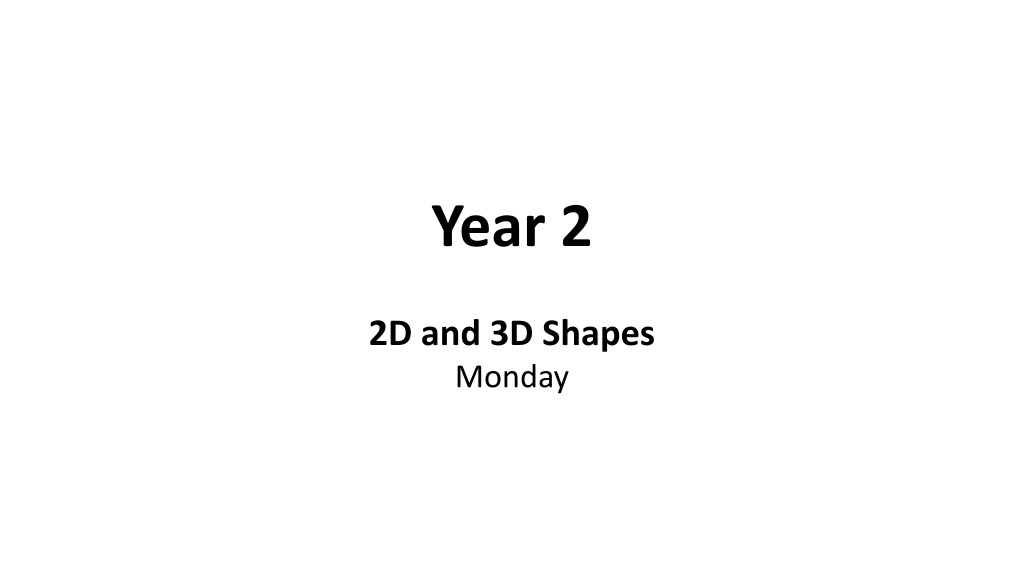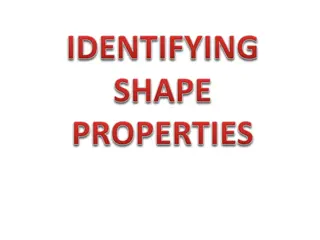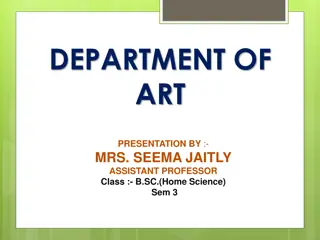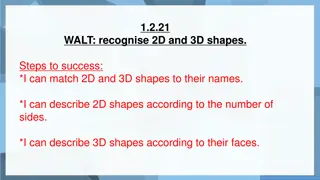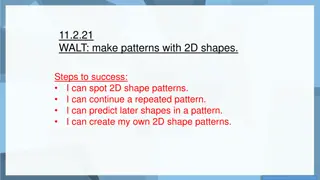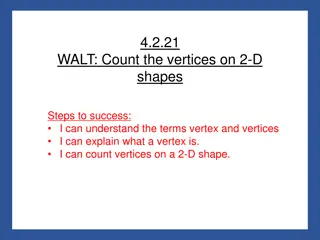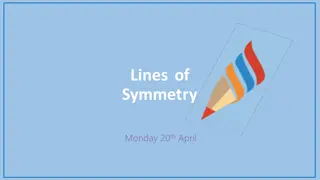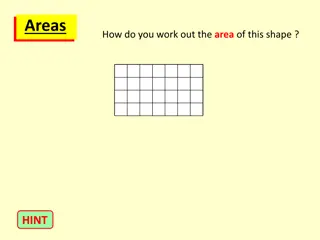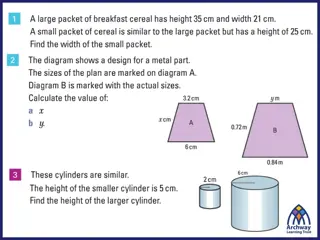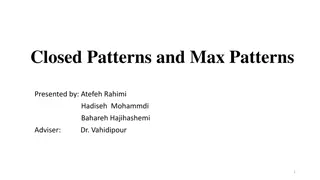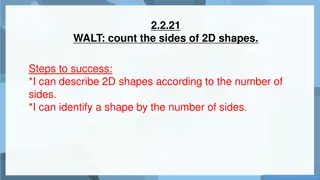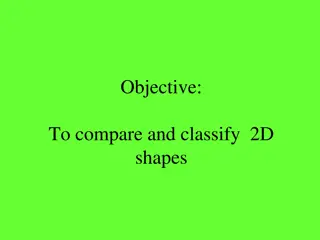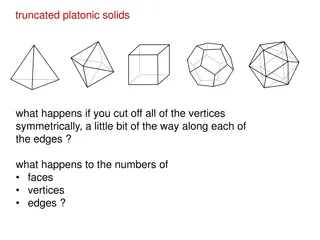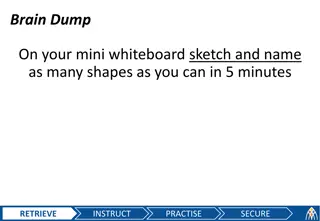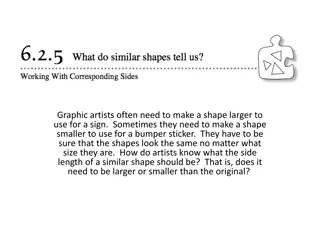Fun with Shapes and Patterns
Discover and identify various 2D and 3D shapes, learn about their attributes, watch educational videos, and engage in shape sorting challenges. Test your skills in arranging shapes to create patterns and go on a shape-spotting adventure outdoors!
Download Presentation

Please find below an Image/Link to download the presentation.
The content on the website is provided AS IS for your information and personal use only. It may not be sold, licensed, or shared on other websites without obtaining consent from the author.If you encounter any issues during the download, it is possible that the publisher has removed the file from their server.
You are allowed to download the files provided on this website for personal or commercial use, subject to the condition that they are used lawfully. All files are the property of their respective owners.
The content on the website is provided AS IS for your information and personal use only. It may not be sold, licensed, or shared on other websites without obtaining consent from the author.
E N D
Presentation Transcript
Year 2 2D and 3D Shapes Monday
Can you name all of these shapes? Pentagon Square Rectangle Triangle Hexagon Octagon
Cube Cuboid Cylinder Cone square-based Pyramid
What about these two shapes? Sphere Circle This is a 3D shape This is a 2D shape
1. Watch this BBC Bitesize video to remind yourself about what a 2D shape is. https://www.youtube.com/watch?v=OVItzLoovLc 2. Now, check yourself! What do most 2D shapes have? Corners and sides A. Yes Are 2D shapes flat? B. Corners, but no sides Sides, but not corners C.
1. Explore this fun BBC Bitesize video about 3D shapes. https://www.bbc.co.uk/bitesize/topics/zjv39j6/articles/zcsjqty 2. Check yourself! 3D shapes have the following dimensions A. Are 3D shapes flat? No length and depth B. length, depth and width C. depth and width
Have a go at sorting the following shapes 2D shape 3D shape
How did you get on? 2D shape 3D shape
Today, there are 2 challenges for you to choose from. You can choose to do either the first one, or the second one. You can also choose to do both.
Challenge 1 Here are some examples of the repeating patterns 1. 2.
How many different ways can you arrange these shapes to make a repeating pattern? (If you exit the Slide Show mode you can do it on a screen, alternatively you can either draw them or print the pictures out)
Challenge 2 Go for a walk. Can you spot all these shapes outside? Every time you spot the shape give it a tick in the box. You can print this page out or you can copy the table on a paper. The main task is for children to observe and practice spotting different shapes around them. Shape Every time you spot the shape give it a tick
Well done, Year 2! Amazing shape detective work today!
Year 2 Counting sides and vertices on a 2D shape Tuesday
Lets recap What is a 2D shape? That s right. 2D shape is a flat shape. It has sides and corners. Give me 3 examples of a 2D shape.
What shape is this? That s right. This is a triangle. I know that a triangle has 3 sides. What is a side? Discuss Can you show me the sides of a triangle?
Watch me I know that a triangle has three sides. This is one side. This is a third side This is a second side. I made sure that I counted one side at a time and one by one, without jumping or missing a side. This way I am making sure I do not make a mistake when counting.
Your turn Count the sides of these shapes. Remember: count one side at a time. Do not skip any. Name Shape Number of sides 5 Pentagon 4 Rectangle Did you get them all right? 4 Square Give yourselves a thumbs up! 3 Triangle 6 Hexagon
This is curious! I counted that a triangle has three sides but I also know that the word tre in Latin means three Can you find out why the shapes have the names that they do? I will reveal the answers at the beginning of the next lesson! 5 4 4 3 6
We looked at the sides of the 2D shapes. Now, lets think about the corners. Can you show me the corners on this triangle? Can you explain what a corner is? The point where two lines meet is called a corner or a vertex. In maths we do not use the word corner , instead we say vertex. Can you say vertex? Instead of saying corners we say vertices !
Your turn 1. Can you find any 2D shapes around your house? Count how many vertices the shapes have. 2. Put these shapes in order based upon the number of vertices they have.
Well done Year 2! Excellent maths work today!
Year 2 Making 3D shapes Wednesday
Did you find out about the names of the shapes? The word pente comes from Ancient Greek and means five The word comes from Latin rectangulus and means straight angled. The word comes from Old French and means right angled. As we know already, tre in Latin means three The word comes from ancient Greek and means six-angled
Lets recap What is a 2D shape? 2D shape is a flat shape. It has sides and vertices. What is a vertex? Vertex is the point where two lines meet.
What shape am I? That s right. I am a pentagon! I am a 2D shape. I have 5 vertices. What am I? I am a 2D shape. You are correct! I am an octagon! I share half of my name with an octopus. I have 8 sides. What am I?
Can you explain in your own words what a 3D shape is? Watch the Monday s video again: https://www.bbc.co.uk/bitesize/topics/zjv39j6/articles/zcsjqty
Your task for today is to create as many 3D shapes as you can. You will need toothpicks, popsticks or any other sticks that are of an equal length to make the following 3D shapes. If you have some playdough or blu tack, you can use it to stick the corners together. You are going to use these shapes in the next two lessons.
For the last two shapes you will need scissors, a sheet of paper, a pencil and a glue or Sellotape. Cone Find a large object (like a pot) to draw around, so you have a circle. Now cut it out. Then, cut out a slice like shown on the picture below. Next, overlap both sides and secure with a tape.
Cylinder If you have a cardboard tube of any kind at home you can use it for tomorrow s lesson. If not, then simply roll the sheet of paper into a tube and secure it with a tape.
Good job, Year 2! High five in the air
Year 2 Properties of the 3D shapes Thursday
Lets recap What is a vertex? Vertex is the point where two lines meet. Which shape would not be flat, 2D shape or 3D shape? That is correct, a 3D shape is not a flat shape. What is the name of this shape? square-based pyramid
Today we are going to work with the shapes you created yesterday. First, let s watch this BBC Bitesize video https://www.bbc.co.uk/bitesize/topics/zjv39j6/articles/zgqpk2p
Which 3D shape properties were mentioned in the video? Faces, edges and vertices. What is a face of a shape? Use one of your shapes to show me A face is a flat or curved surface of a shape. Do you remember how many faces did the cube have in the video? 6 Find the cube you made yesterday. Count how many faces your cube has. Also 6, right?
Your turn Explore all the shapes you made yesterday. Count how many faces each shape has. What about the cone? How many faces does the shape have? Once you are finished check your answers. Name of the shape Number of faces 3 (1 curved surface and 2 faces) cylinder cube 6 square-based pyramid 5 2( 1 curved surface and one face) cone cuboid 6
We know that faces are flat or curved surfaces. An edge is where the two faces meet. Have a go at showing the edges on the cube. Let s check Did you get 12 edges? Well done. How did you make sure that you have counted all edges and didn t count any twice? Can you check if I have counted and marked all the edges?
Your turn Explore all the shapes you made yesterday. Count how many edges each shape has. Once you are finished check your answers. Name of the shape Number of faces Number of edges 2 (1 curved surface and one face) cylinder 2 cube 6 12 square-based pyramid 5 8 2( 1 curved surface and one face) cone 1 cuboid 6 12
Well done, Year 2! Excellent maths work today!
Year 2 Properties of the 3D shapes Friday
Lets recap Explain what the following words mean: Side in a 2D shape Vertex in a 2D shape Edge in a 3D shape Face in a 3D shape
Today, we are going to look at the last property of a 3D shape. Watch BBC Bitesize video again very carefully. Which property of a 3D shape we haven t explored yet?
What did you notice, which property we havent looked at yet? That s correct. We need to explore the vertices on a 3D shape. Do you think you might have an idea of what a vertex in a 3D shape might be? Take a cube and have a go at showing the vertices on a 3D shape.
Watch me These are vertices in a cube. Did you have the same idea? A vertex in a 3D shape is a point where two or more edges meet.
Your turn Count how many vertices the shapes you have made have? Once you are finished check your answers. Name of the shape Number of vertices Number of faces Number of edges 2 (1 curved surface and one face) cylinder 2 0 cube 6 12 8 square-based pyramid 5 8 5 2( 1 curved surface and one face) cone 1 1 cuboid 6 12 8
Your task today is to investigate 2D and 3D shapes which stack and which roll. roll stack Sort your shapes using the Venn diagram. Explain what you notice about each set. Do all shapes with flat surfaces stack?
